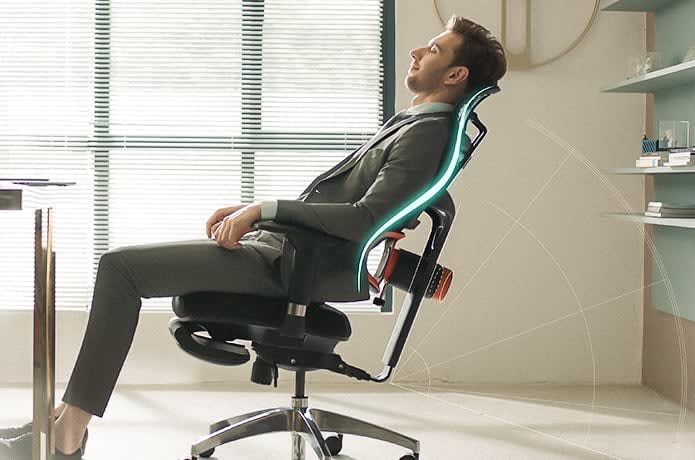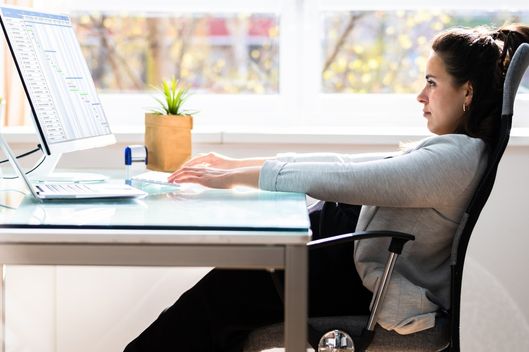The quick pace of life today has most people sitting in front of a computer for endless hours, which quickly turns into lousy posture. Good posture is paramount not only to general health and the prevention of back pain but also to putting less stress on muscles and joints, as well as improved circulation. Choose furniture that provides body support; this is an essential investment since it may greatly influence your posture.
It discusses several types of furniture to improve posture to keep one’s place warm, comfortable, and healthy.
The Science Behind Posture
This defines good posture: preserving natural curvatures of the spine and shoulder and ear alignment at one level. The benefits of good posture include that it does not stress or strain the body’s ligaments and muscles; it enables them to work effectively. Some common problems linked with lousy posture involve headaches, neck strain, and continuous backache, to mention a few, and a host of other health problems. We can choose our furnishings with greater knowledge if we recognize how important posture is.

Types of Furniture to Improve Posture
Ergonomic Chairs
Ergonomic chairs are designed to cradle one’s natural spine curve and promote good posture. Mostly, what naturally goes with such types of chairs are armrests, lumbar support, and seat height adjustments to customize a chair according to one’s body dimensions. This will give you a better neck and back once you achieve the correct sitting posture, decreasing the risk of developing musculoskeletal disorders and allowing ease while sitting for long periods.
Standing Desks
Standing desks are increasingly popular to replace sitting desks. These desks shift the position to stand up and sit down during the day, keeping blood flowing and alleviating pressure from the back. Stand-up workstations can improve posture, reduce/eliminate back pain, and increase energy levels. The benefit is particularly huge for people who sit at their desks for long hours.
Kneeling Chairs
The kneeling chairs relieve the tensions in the lower back and maintain the natural curvature of the spine, promoting an open hip angle. These chairs will help achieve equal weight distribution between the shin and buttocks area, thus holding postures better and reducing the chance of getting back pains.
Balance Ball Chairs
Stability ball chairs, or balance ball chairs, keep you active sitting: core muscles help you stay upright and balanced on a ball. This chair promotes movement, lessens back pain, develops core musculature, and assists in posture. To prevent potential strain, it’s crucial to use these seats correctly.
Lumbar Support Cushions
Some of these lumbar support cushions can be used to give best support to the lower back. It can be installed in almost any chair and corrects your sitting posture as you are unlikely to develop a sore back after several hours of sitting or working at the computer. They help maintain the natural curve of your spine, filling in the gap that exists between the lower spine and the seat.
Footrests
However, it can be pretty essential to have a footrest for keeping a good posture. They elevate your feet to the level of the floor, which is known for making better spinal alignment and ensuring less pressure on the lower back. Besides, a comfortable footrest improves blood flow and reduces the possibility of varicose vein formation.
Choosing the Right Furniture
Assessing Your Needs
It’s critical to consider your individual needs while choosing furniture to improve posture. Take stock of your desk setup and any postural issues. Are you in the market for a standing desk that will let you move about more during the day, or maybe a chair with back support?
Trying Before Buying
It’s important to test furniture before buying. To make sure it is cozy and supportive, spend some time standing at the desk or sitting in the chair. Seek for features that are adjustable so you can adapt the furniture to your body.
Adjustability Features
The most important adjustable elements to search for are armrests, desk height, lumbar support, and seat height. These characteristics are necessary to fit your body into the furniture and encourage proper posture.
Setting Up an Ergonomic Workspace
Desk Setup
During typing, the elbow must be bent at an angle of 90 degrees, wrists must be straight, and shoulders must be relaxed at the perfect height of the workstation. Monitor Arm’s length and position at eye level to avoid neck discomfort.
Chair Setup
First, raise or lower your chair until a 90-degree knee bend is achieved; feet should be flat on the floor. Secondly, by use of armrests, your arms will be supported comfortably. Your back will still maintain its natural curve with support from a backrest.
Additional Accessories
Proper lighting is necessary so one does not have to strain the eyes. One should use document supports to avoid strain on the neck area, enabling the papers to be at eye level. Take into account add-ons like as keyboard trays to improve your ergonomic configuration even further.

Maintaining Good Posture throughout the Day
Regular Breaks
Having regular breaks is key to maintaining the proper posture. Get up, stretch, and move around every half hour in order to promote circulation and keep away stiffness. Simple stretching can also decrease the tension and improve the working area of your body.
Mindfulness and Awareness
First, one needs to be aware of one’s posture to keep a good posture throughout the day. Reminders to check your posture or inclusion of posture checks into your daily routine will help you to be more mindful and let yourself make the necessary corrections.
Case Studies and Success Stories
Examples from real life can be instructive and motivating. Provide case studies or testimonials of people using ergonomic furniture to improve their postures. State the challenges they went through, the implemented solution, and the positive results they got.
Common Myths About Posture and Furniture
There are many rumors surrounding ergonomic furniture and posture that create confusion. Dispel rumors are often held—like the one that pricey ergonomic furniture is always the way to go, or standing all day is preferable to sitting. Give accurate information to dispel these myths.
Budget-Friendly Posture Solutions
You do not have to spend a million bucks to achieve good posture. Consider easy, inexpensive ergonomic furniture options and DIY ways to improve your posture without spending much money. The slightest changes, like resting your feet on a footrest or adding that lumbar support cushion, can make a huge difference.
Expert Recommendations
It should include expert advice on posture and ergonomics. Share professional tips for setting up an ergonomic workspace and underline a few recommended brands or models of ergonomic furniture.
Conclusion
This means that proper furniture can make a massive difference in posture and health. You will fashion a much healthier and more comfortable workspace if you invest in furniture designed to assist your body and let it know just how important good posture is. Be mindful of your posture throughout the day, sharpening your attention as needed.
